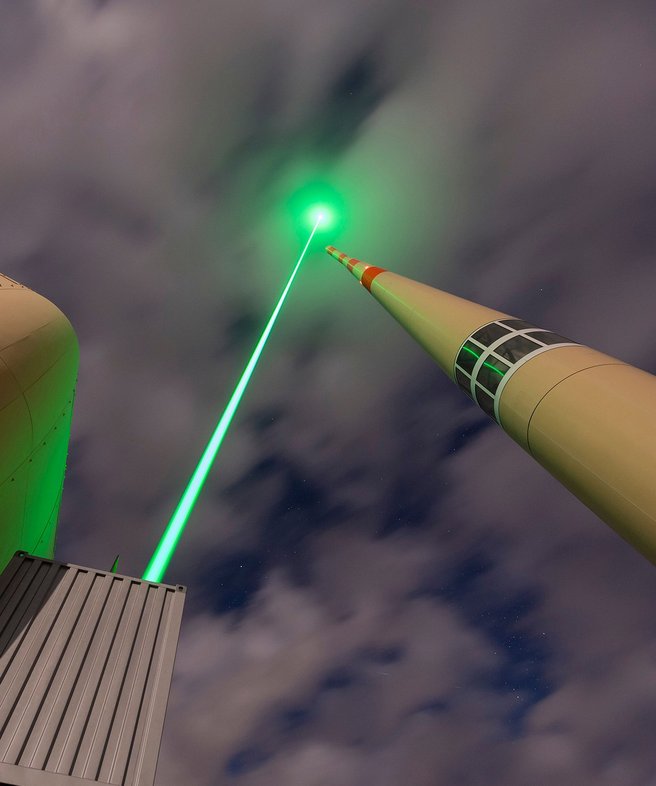VISION: ZAPPED

Ancient peoples interpreted thunder and lightning as threats from the gods. In Europe, they saw the bright flashes of light in the sky as a sign of an angry Thor throwing his hammer or the Olympic god Zeus exploding in rage. Nowadays, the explanation is a bit more scientific: raindrops can become electrically charged in a thundercloud. The particles in the upper part of the cloud have a positive charge and those in the lower part have a negative charge, creating electrical tension. This is released in a flash of lightning.
This type of natural phenomenon can be extremely dangerous. In Germany alone, between thirty and fifty people are hit by lightning every year, often while jogging or cycling. The economic impact is also sizeable. There are billions in damages annually from lightning strikes to airports, power plants, skyscrapers and forests. In the United States, lightning causes annual losses amounting to 5 billion dollars, mostly due to disruptions in air traffic and damage to planes and high-voltage power lines. German household and residential building insurers had to pay out around 200 million euros for lightning and power surge damage in 2019.
Hope is now being offered by a supplier of machine tools in Swabia, Germany. To help prevent damage from random lightning strikes, Trumpf has been working with the University of Geneva on the EU project Laser Lightning Rod. At the top of Mount Säntis, in Switzerland, the team is attempting to divert lightning from thunderclouds in a controlled manner using a laser cannon. The EU has pledged 2 million euros in funding for the research project.

“We’re shooting the laser beam into the clouds at a rate of one thousand pulses per second.”
Clemens Herkommer, an engineer at Trumpf Scientific Lasers in Unterföhring, near Munich, has been working on this project for four years. At least the idea behind it is easy to explain: the powerful laser beam is shot into the clouds during a thunderstorm, electrically charging the air around the beam to such an extent that it creates a plasma channel. “We’re shooting the laser beam into the clouds at a rate of one thousand pulses per second,” Herkommer says. Since the channel is good at conducting electricity, lightning bolts strike inside the laser beam and are then guided to the ground through the channel. The laser beam cannot be seen because its radiation is at the infrared end of the spectrum and thus invisible to the human eye. But it does hum: the highly energetic laser flashes heat up the air surrounding them, thereby creating small pressure waves.
Implementation of this ambitious plan has been anything but easy. Just getting the laser to the mountain’s summit, at 2,500 meters, took two weeks. The team used cable cars and helicopters to transport the partly disassembled laser up Mount Säntis at the end of May 2021.Thus far, at least, the Trumpf laser is one of a kind. Other projects haven’t managed to create the plasma channel through the clouds for long enough and barely made it to ten laser pulses per second. In this case, the lightning seeks its own path and doesn’t react to the laser. Fortunately, the company won’t have to worry about having enough data to measure. Hundreds of lightning bolts strike the Mount Säntis summit during the peak season for thunderstorms from June to September—more than enough for some electrifying results.